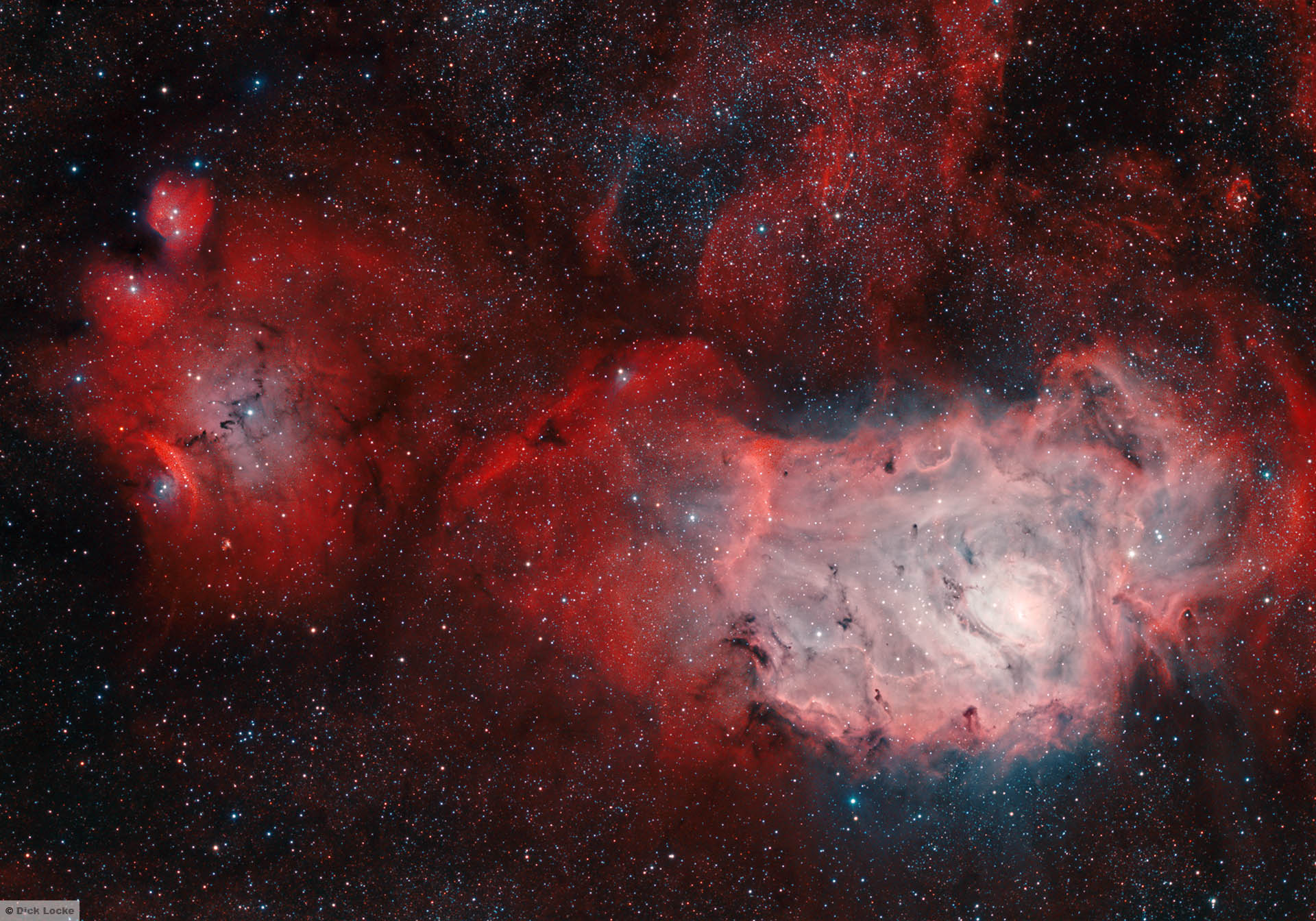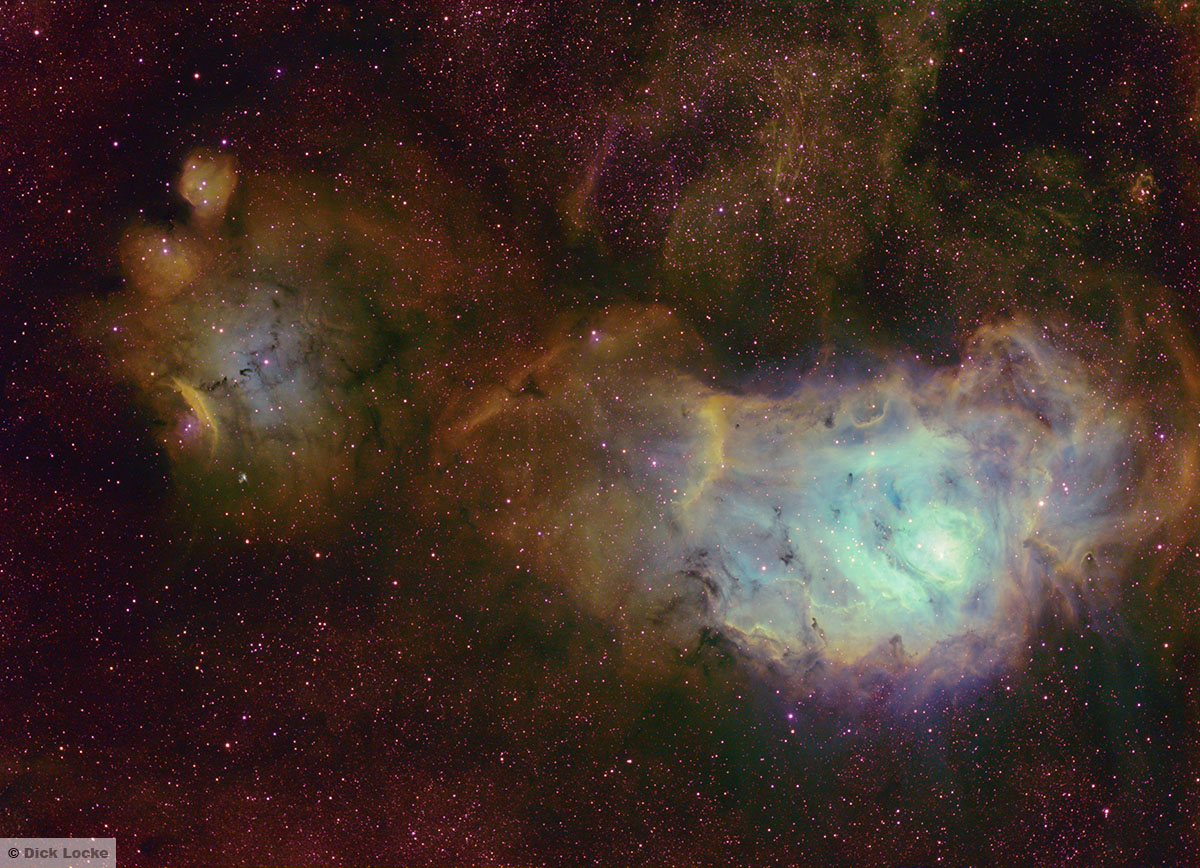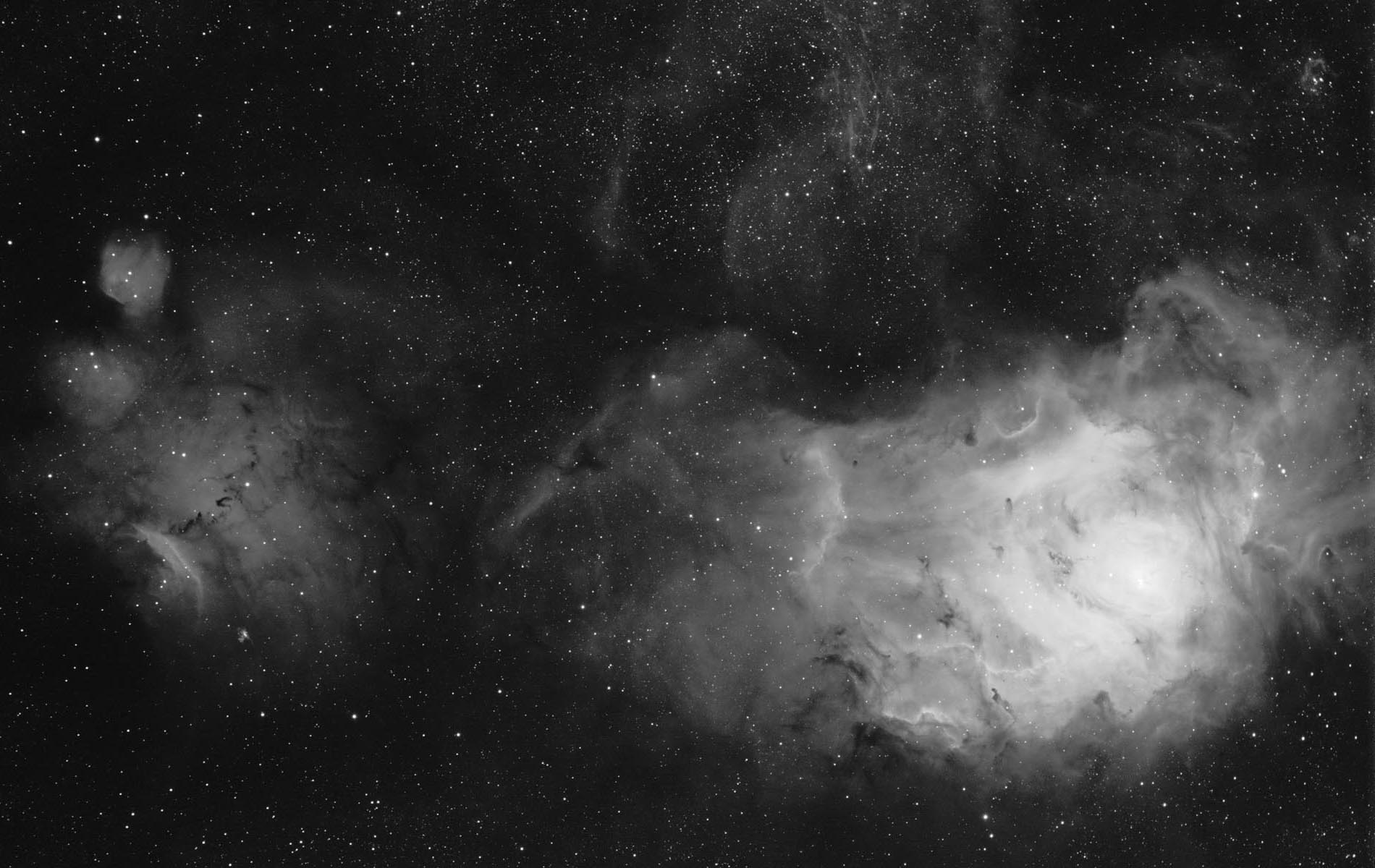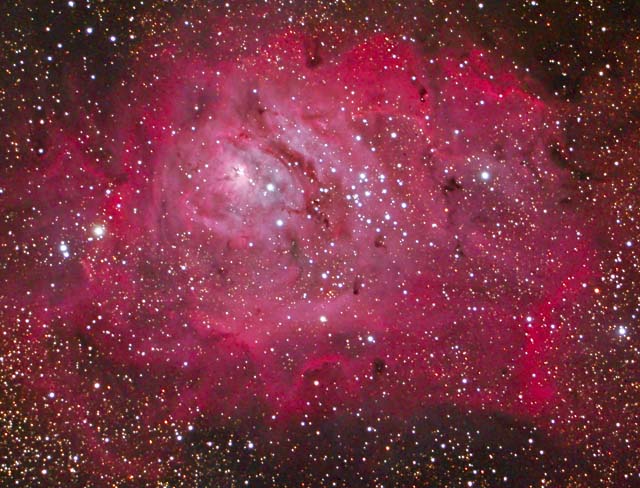
The Lagoon Nebula Area: 14 Hours Exposure
Lagoon Nebula (M8) Pictures
Copyright © 2005-2015, Dick Locke. All Rights Reserved. Contact and Image Use Information.

The Lagoon Nebula, Messier object 8, is a big and bright star-forming region near the teapot asterism of Sagittarius. The dark dusty areas create an interesting contrast, and there are also a few blue reflection nebulae areas shown. M8 is about 5,000 light years away, located towards the center of our Milky Way galaxy. The lagoon nebula is the bright area on the right, while area to the left contains NGC 6559 & various other objects that often get overlooked due to the brighter neighbors. See this area in context on my M20 Starcloud Area page. The Trifid Nebula (M20) isn't shown in this view, but it is very close. See M20 in context with M8 on this page. This page provides a pictorial index of objects in the area.
Image details: This image took 4 years to make with about 14 hours of total exposure! I obtained the final narrowband exposures for this image at Starry Nights in 2015, a fair bit came from the 2014 Davis Mountains trip, and the first frames date back to June 2011. It is primarily composed of filtered narrowband exposures blended together with a ratio designed to simulate natural colors. (Red = Ha and Sulfur, Green = O3, and Blue = O3 with some Ha) Red/Green/Blue color filtered images were also used. 164 * 5 minute exposures, 13.7 hours total, as follows: 78 min H-alpha (6.5 hours), 35 Sulfur, 10 Red, 19 Oxygen, 8 Green, 14 Blue. AP 900GTO mount, SBIG ST-8300 camera along with the Takahashi FSQ-85 "Baby Q" telescope (primarily without the reducer). Some exposures used the Takahashi TOA 130 telescope. Most of the luminance comes from use of the narrowband H-alpha filter. My processing techniques are discussed here, and see the section on Natural Color Technique from Narrowand Images that describes my processing here in detail.

This is a Hubble Palette version of the Lagoon Nebula. Red is Sulfur, Green is H-alpha, and Blue is O3. Same base data as above except for the RGB filtered frames, this is 10 hours total exposure.

9/19-20/2006 at the HAS site near Columbus. Canon EOS 20Da (unmodified), Takahashi TOA 130 (a 5" APO refractor), Losmandy G-11 mount. My current image processing workflow is here. On this image I also ended up doing a variant on Jerry Lodriguss' layer masking technique to preserve detail in the bright area. Compare with the old film image, bottom.
See the Lagoon Nebula and the nearby Trifid Nebula on this page. A visual index to the objects in this area is here.

This is a 1900x1200 sized view of the Lagoon Nebula (Messier object # 8, aka M8) area using 1.5 hours total exposure through the Takahashi FSQ-85 Telescope (no reducer), AP 900GTO mount, SBIG ST-8300 camera from Wimberley, TX. It uses a Narrowband H-alpha filter, which filtered out most of the 83% illuminated moon light that was about 60 degrees away during imaging.
I'll be working on a new mosaic of this very interesting part of the sky. Note in addition to M8, which commands a lot of attention, there are also a number of other objects in the "paw" area on the right: NGC6559, IC4685, B303, IC Objects 4684, 1274, 1274; B91. See my close-up of that area here.

Lagoon Nebula (M8) Close Up
This is a crop/resize of the image at the top of the page. Dig the Bok Globules.. Compare with old film image, below.

This is a stack of 4 different film images on two different telescopes. See the SEDS write-up Can you make out the small black globules? From Seds: One of the remarkable features of the Lagoon Nebula is the presence of dark nebulae known as 'globules' (Burnham) which are collapsing protostellar clouds
This is The Hourglass nebula, but the hourglass is difficult to see in this image (it's in the bright part, and is a bit washed out).
Details for images on this page:
Takahashi TOA 130 and Fs102 telescopes with reducer
various exposure lengths
Losmandy GM-11
ST80 and SBIG STV guiding
Negative Scan, Nikon Coolscan IV ED, Processed in Photoshop
Astronomy Pictures: Dick Locke's Astrophoto Gateway page....
Copyright © Dick Locke. All Rights Reserved.
Contact and Image Use Information
hits.